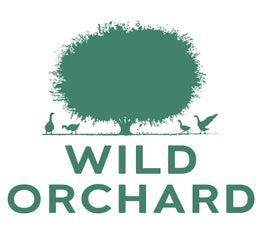
By now we all know the term Organic. But what is Regenerative Agriculture?
And why does it matter?
Healthy Soil
The main focus of regenerative farming is soil health. Basically it means growing crops in healthy soil by:
- Not tilling. Tilling or plowing can destroy the natural structure of soil, causing it to lose its healthy microbes and rendering it barren. Leaving it alone allows for better water absorption and a richer organic environment to develop within the soil which supports strong, healthy plants.
- Keeping the soil covered. Because soil’s essential nutrients lie in the topsoil, if you keep it uncovered, over time much of the nutrients will dry out or get washed away. "Cover crops” are often planted alongside the main crops in order to keep the soil covered and protected from erosion and nutrient loss.
- Growing diverse plants. When all the crops planted in one plot of land are the same, the soil can develop an excess of certain nutrients while lacking in others. Letting different kinds of plants grow near the main crops can help keep the soil microbiome diverse and healthy. They can also help keep pests away, reducing the need for pesticides.
- Not using chemicals or additives. Whether pesticides or fertilizers, additives can disrupt soil health in countless ways by messing up the microbiome. In some cases, regenerative farms merely use less chemical fertilizers and pesticides. This is why it's important to look for teas that are produced both organically and regeneratively.
- Integrating animals. Instead of using chemical or processed fertilizers, allowing wild or organically grown animals to graze the field and poop onto the soil is a totally natural way to enrich and increase the soil’s microbiome.
- Preserving healthy surroundings & community. Without a thriving natural environment and healthy community of like-minded farmers to protect and preserve the crops and soil, there is no regenerative farming.
Environmental Benefits
Not tilling and keeping the soil covered means less erosion. Why do we want less erosion?
Topsoil is where the most essential nutrients are contained, but it’s also the part that is most easily swept away by wind and water. When soil gets swept away with water, it flows downstream and the sediments can cause flooding. This destroys entire communities and their livelihoods. It has also become a serious global problem by creating more and more land that is no longer suitable for agriculture, while populations continue to grow. Historically, over-tilling has led to disasters like the Dust Bowl in the 1930s when poor soil practices compacted with drought, high temperatures and high winds, and the resulting agricultural decline both worsened and was worsened by the Great Depression.
Soil erosion also means having less soil to absorb carbon dioxide from the atmosphere (soil can potentially hold about 5% of Greenhouse Gas Emissions caused by human activities per year). And, it means less fertile land for carbon dioxide-absorbing plants to grow on, which we actually need more of as global warming worsens. If you want to learn more about soil erosion, click here for a great overview.
What else contributes to healthy soil? And what else does healthy soil contribute to the environment? Different kinds of plants growing among the primary crops means more diverse carbohydrates are released into the soil. These attract a plethora of microbes that feed on them, a process which then produces abundant nutrients. Thus, less synthetic or processed nutrient additives are needed. Naturally, a richer microbiome also attracts more insects, birds and wildlife at large by providing an environment for them to thrive.
Similarly, when animals are allowed to graze among the crops, they can further enrich the soil with their poop, while helping to keep unwanted weeds under control by eating them. In turn, animals that are raised organically and free-roaming produce better quality and more nutrient-dense meat and eggs. This also means they are humanely raised and are produced from a source that contributes to a healthier environment. In other words, they are better for your health and the health of the planet.
It makes sense that these practices can only be carried out by farmers who truly understand and care about them, and earn the fair wages that allow them to continue this work which often requires more labor and investment than non-regenerative farming. Being part of this community means not only practicing and supporting it, but also being nurtured by it. It means being part of the entire ecosystem.
In short, healthy crops come from healthy soil, and healthy soil is created by minimizing manmade inputs, keeping it organically covered, and letting it thrive in as much unpolluted natural diversity as possible. This is the heart and essence of Wild Orchard Green Tea—hence our name, Wild Orchard—which we will explain more in our next post. Stay tuned!
Wildflowers growing among the tea trees on Wild Orchard's regenerative organic partner farm

Here's a short video segment that nicely explains soil health and its impacts:
And if you have an hour to spare, here's an excellent video that explains regenerative farming in detail. Get comfortable, make yourself a cup of green tea, and enjoy!
Sources for this post:
https://www.wri.org/insights/causes-and-effects-soil-erosion-and-how-prevent-it
https://drought.unl.edu/dustbowl/Home.aspx
https://news.mongabay.com/2018/03/keeping-carbon-in-the-ground-can-cut-emissions-and-boost-food-security/
https://rodaleinstitute.org/why-organic/organic-farming-practices/livestock-management/
https://www.climaterealityproject.org/blog/what-regenerative-agriculture




